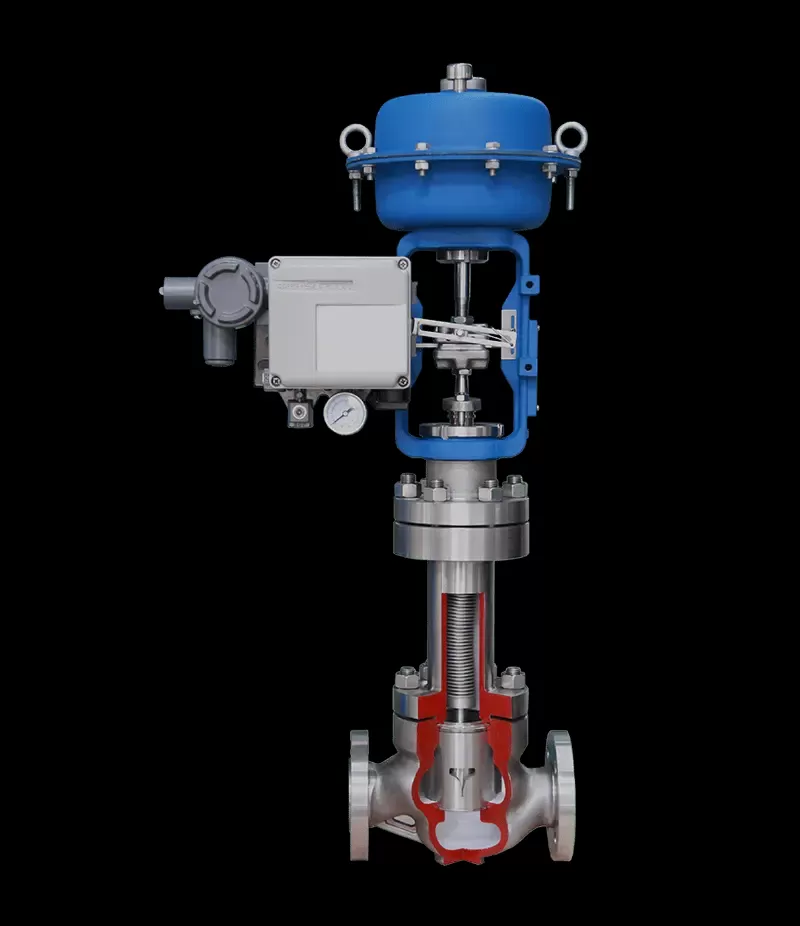Notifications

6 minutes, 55 seconds
-100 Views 0 Comments 0 Likes 0 Reviews

In industries where safety, environmental protection, and process reliability are paramount, even the smallest leaks can have serious consequences. From petrochemical plants and pharmaceutical manufacturing to power generation and semiconductor processing, compliance with stringent safety and emission standards is non-negotiable. In these demanding environments, bellows globe control valves provide a vital solution for precise flow control with zero fugitive emissions.
A bellows globe control valve is an advanced variant of the conventional globe valve, distinguished by its integrated metallic bellows seal. This flexible bellows envelops the valve stem, creating a hermetic barrier that eliminates leakage paths, enhances sealing integrity, and improves handling of hazardous or volatile fluids. The bellows not only prevents stem leakage but also extends operational life and reduces maintenance requirements.
This article explores the design, technical features, advantages, applications, and internal components of bellows globe control valves, highlighting how they contribute to safe, efficient, and environmentally responsible industrial operations.
A bellows globe control valve is a linear motion valve used to precisely regulate fluid flow in pipelines. Unlike traditional globe valves, it incorporates a metallic bellows element between the valve stem and bonnet. As the stem moves to modulate flow, the bellows expands or contracts, sealing the process fluid from the external environment and eliminating leakage through the packing gland.
Typically fabricated from corrosion-resistant stainless steel or Inconel alloys, the bellows is welded to both the stem and bonnet to form a leak-tight assembly. This design maintains zero leakage even under high pressure, aggressive chemicals, and elevated temperatures.
Conventional globe valves rely on packing to seal the stem, but packing materials degrade over time due to wear, vibration, and thermal cycling, allowing fugitive emissions. Bellows-sealed valves replace packing with a metallic bellows seal offering:
Hermetic Sealing: Meets or exceeds stringent emission standards (e.g., TA-Luft, ISO 15848, EPA).
Reduced Maintenance: No need for periodic packing adjustments or replacement.
Extended Service Life: Bellows designed for tens of thousands of full-stroke cycles.
Enhanced Safety: Critical for handling toxic, flammable, or volatile fluids.
Metallic Bellows Assembly: Thin-walled stainless steel or Inconel bellows, helium leak-tested for absolute sealing integrity.
Non-Rotating Stem: Prevents torsional stress on bellows, improving durability and alignment.
Hermetically Welded Connections: Minimizes leak paths by reducing threaded or flanged joints.
Vacuum Brazed or Welded Seat: Permanent seat attachment eliminates loosening and leakage over time.
Backup Packing Seal: Secondary stem packing provides fail-safe sealing with optional leak detection ports.
The globe valve features a spherical body that houses the valve seat and plug (disc). Key components include:
Valve Body: Pressure-containing shell with inlet and outlet ports.
Bonnet: Encases the stem and bellows assembly, allowing access for maintenance.
Valve Stem: Connects actuator/handwheel to plug, transferring linear motion.
Plug (Disc): Modulates flow by throttling or shutting off fluid.
Seat Ring: Provides sealing surface for the plug.
Bellows Seal: Hermetic seal between stem and bonnet to prevent leakage.
Packing and Gland: Secondary sealing mechanism if bellows integrity is compromised.
Globe valves are typically actuated pneumatically, electrically, or hydraulically for remote or automated operation.
Advanced globe valves often use cage-type trims offering:
Cage Guidance: Maintains plug alignment for smooth operation.
Replaceable Trim: Allows customization of flow characteristics or noise reduction upgrades.
Anti-Cavitation Designs: Protects against cavitation damage under high differential pressures.
Noise Control Options: Reduces operational noise in gas or steam services.
Zero Leakage: Helium leak-tested to rates as low as 10⁻⁶ mbar·l/s, ensuring no fugitive emissions.
Safety and Compliance: Meets EPA, ISO 15848, TA-Luft, and other strict environmental standards.
Reduced Maintenance: Eliminates repacking labor, lowers downtime, and reduces spare part needs.
Long-Term Durability: Bellows withstand tens of thousands of cycles with corrosion and fatigue resistance.
Precision Control: Accurate throttling with low hysteresis and fast response.
Versatility: Suitable for liquids, gases, vapors, and slurries across wide pressure and temperature ranges.
Petrochemical and Chemical Plants: Handling corrosive, toxic, or flammable fluids with zero emissions.
Power Generation: Precise control of boiler feedwater and steam at high pressure.
Pharmaceutical and Food Industries: Sterile and cleanroom fluid control.
Semiconductor Manufacturing: Ultra-pure water and gas flow regulation, vacuum processing.
Nuclear Power: Reactor coolant and containment systems requiring absolute sealing.
Cryogenic Systems: Control of liquid oxygen, nitrogen, helium at cryogenic temperatures.
In process industries where safety, reliability, and environmental compliance are critical, bellows globe control valves deliver unmatched sealing performance and precise flow control. Their hermetic metallic bellows assembly ensures zero fugitive emissions, reduces maintenance, and extends service life even under harsh operating conditions.
From chemical refineries to nuclear plants and semiconductor fabs, these valves provide robust, maintenance-friendly solutions that align with modern regulatory and sustainability goals. Selecting and maintaining bellows globe control valves is a key step toward achieving safe, efficient, and environmentally responsible process control.Know more about Google SEO Directory

